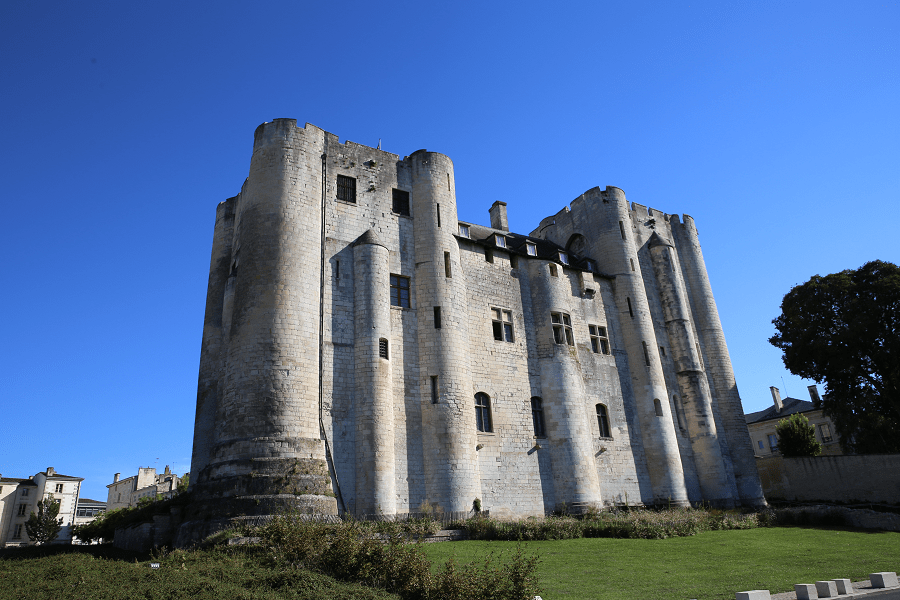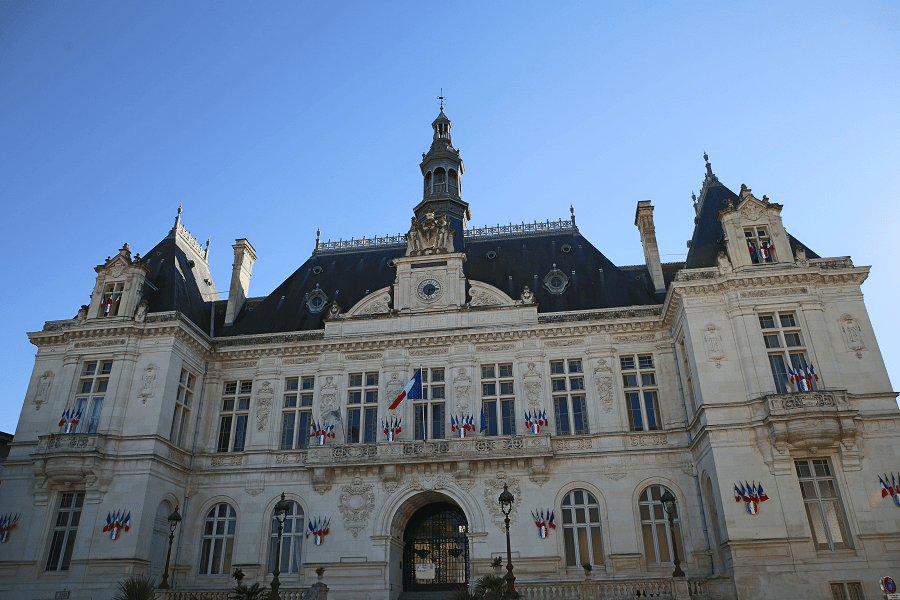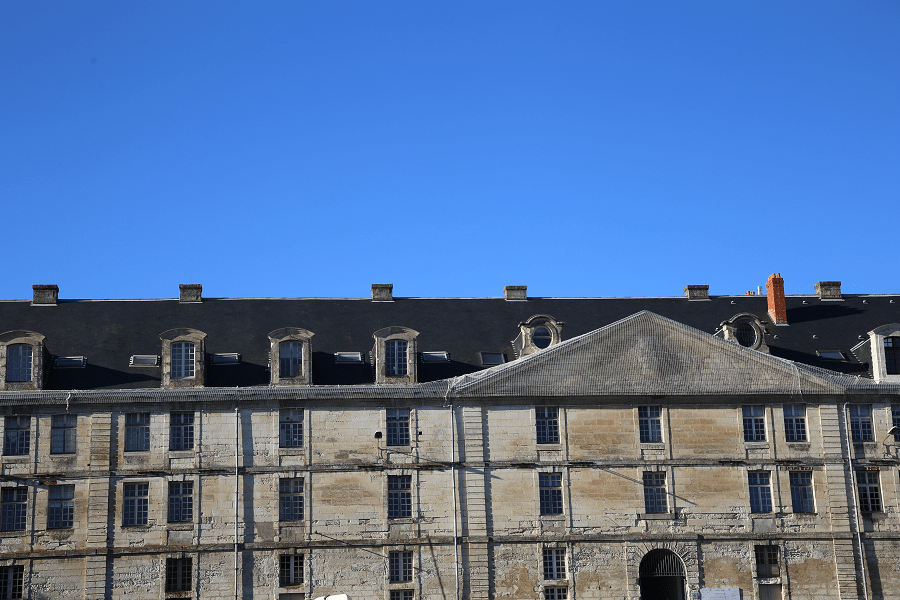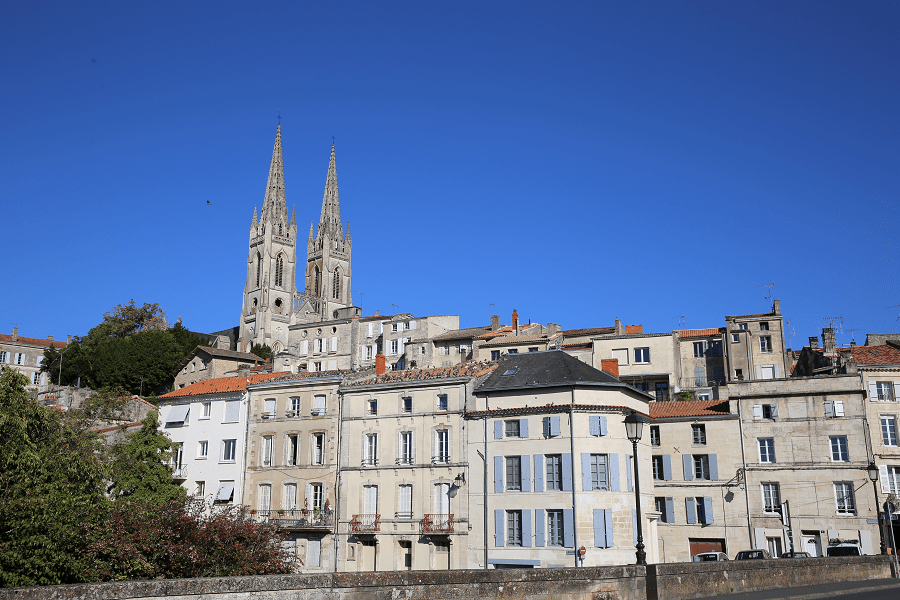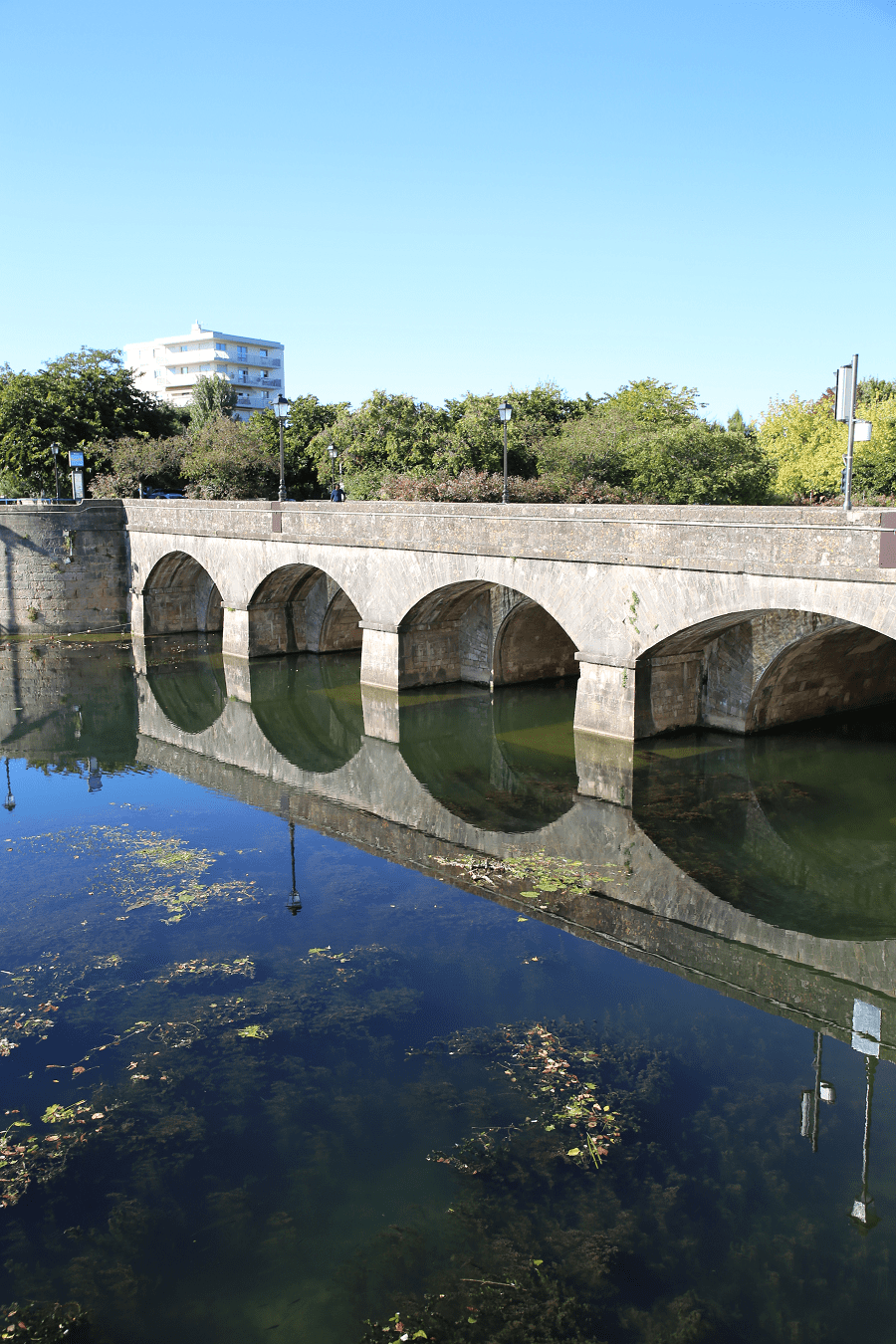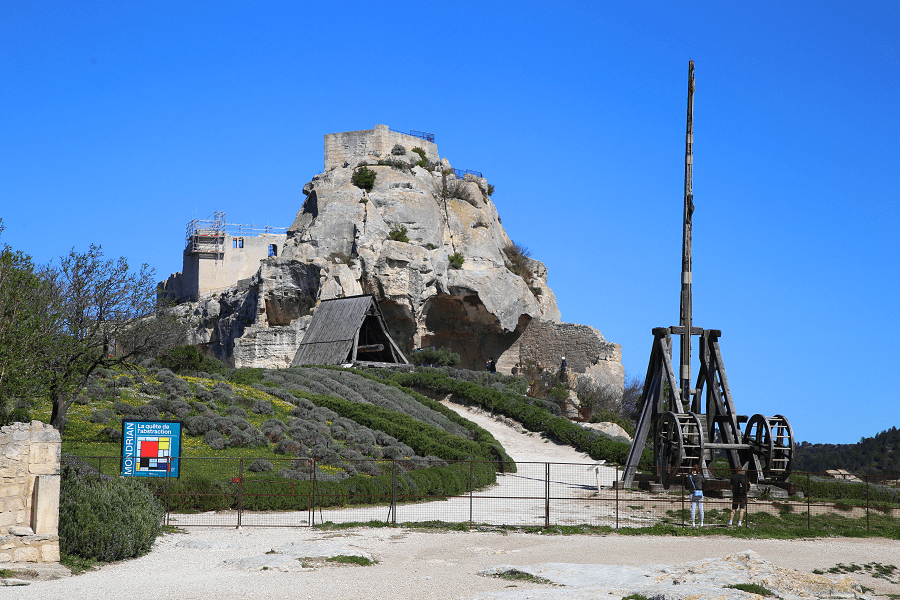Niort (fr. Niort) is a commune in the Deux-Sèvres department in western France.
The city belongs to the Regional Natural Park of the Marais Poitevin, a vast wetland spread over the three departments of Charente-Maritime, Deux-Sèvres and Vendée.
Its economy is mainly based on the tertiary sector (insurance, banks, assistance, IT and financial consultant, mail order sales, etc.). The city is famous for notably hosting the headquarters of the main French mutual insurance companies, and is considered the regional capital of the social economy.
According to the Banque de France, these different activities make Niort the fourth largest financial center in France, in terms of financial flow exchanges, behind Paris, Lyon and Lille. Niort is ranked seventh out of 50 (equivalent urban areas) for senior jobs. Niort is also an important commercial and logistics center at the crossroads of the A10 and A83 motorways.
Tourism and attractions
TOP 5 sights must see in the city:
Niort Donjon or Château de Niort (the former is most often used today) is a medieval castle in the French town of Niort in the département of Deux-Sèvres. It consists of two square towers, linked by a 15th-century building and dominates the Sèvre Niortaise valley.
The two donjons are the only remaining part of the castle. The castle was started by Henry II Plantagenet and completed by Richard the Lionheart. It was defended by a rectangular curtain wall and was damaged during the Wars of Religion. From the 18th century, the castle served as a prison.
Today the castle houses the following museum collections:
- archaeological museum on the ground floor with Bronze Age, Gallo-Roman and Middle Ages exhibits
- museum of chamois leather and glove making on the first floor
- a reconstructed Poitevin interior from 1830 is found on the second floor, as well as a nationally important collection of costumes, headgear and jewelry.
From the roof, there is a beautiful view over the town and the Sèvre Niortaise.
The Pillory is the old town hall, a precious example of Renaissance architecture, built on the spot where the medieval pillory was, it was remodelled in the sixteenth century by the architect Mathurin Berthomé. The upper part of the belfry dates from the seventeenth century. After having housed a bookstore for a while, it is now dedicated to temporary exhibitions.
Trapezoidal in plan, the three-storey building presents in particular an attractive upper decoration with its windows with sculpted pediments, candelabras, battlements and merlons supported by consoles, gargoyles.
During the restoration of 1885, the painted decoration of the large hall on the first floor was entrusted to Charles Lameire. There is a fireplace with painted plant decoration, as well as the coats of arms of the mayors and aldermen of Niort, under the Ancien Régime. The Pillory is classified as a historical monument. It housed a bookstore before today regaining its function as an art exhibition space.
The Notre-Dame church, Notre-Dame parvis, in flamboyant Gothic style, dates to the fourteenth century but owes much of its current appearance to the fifteenth and sixteenth centuries. Former Romanesque church, its plan presents a central nave, quite wide, confined by two secondary naves where chapels are open. The whole is covered with vaults with eight ribs according to the Angevin Gothic process or “Plantagenêt”. It has a bell tower with a conical spire of 75 meters. The main entrance on the north side is adorned with a remarkable sixteenth century portal dedicated to the Virgin, where the decorative elements of a late Gothic and those of the Renaissance are mixed.
The Church of Saint-André, rue Saint-André, the important Romanesque building, only a few sculpted fragments remain in the museum. It was modified and enlarged in the Gothic period and then ruined by the Protestants in 1588. After a first restoration, the church was rebuilt and enlarged in 1685. It served as a fodder store during the wars of Vendée.
Les Halles, built in 1869 by Durand, in cast iron and steel in the style of Baltard, is the third covered market in Niort (the medieval halls of Niort were considered to be the largest in the kingdom). The current building, made up of a large central nave and two aisles, was subsequently confined to two galleries opening onto the Place du Donjon and the Rue Brisson. Each facade is decorated in its centre with three arches housing an entrance door.
Gastronomy and restaurants
Angelica is a plant, from the apiaceae (formerly umbellifera) family, cultivated as a condiment and medicinal plant for its very aromatic and stimulating petioles, stems and seeds and for its root used in herbal medicine. Nuns from the city of Niort, in the eighteenth century, had the idea of candying angelica and giving this plant, with its reputed medicinal properties, the fame of a delicacy.
A liqueur herb, angelica, alone or associated with other aromatic species, gives its fragrance to many ratafias, elixirs, creams and liqueurs. It is the main component of Angelica liqueur from Niort.
Generations of niortais market gardeners had selected the plant for confectionery. It needs fertile soil, always fresh but sunny, and careful cultivation methods.
Today, Niort maintains the tradition and the recipe for candied angelica (as a confectionery) remains a trade secret. However, urbanization has moved this delicate culture away, on the outskirts of the commune of Magné and Chanteloup where it remains cultivated, even if it is sold in Niort.
Best restaurants are situated in the Old city. There are only two Michelin list restaurants (no stars):
- Le P’tit Rouquin, 92 rue de la Gare, 18 – 45 EUR • Traditional Cuisine
- L’Adress…, 1 rue des Iris, Bessines, 20 – 72 EUR • Modern Cuisine
Shopping
Shopping is not a priority on the tourist program except for Angelica liqueur from Niort.
Transport and how to get to?
The Niort – Marais Poitevin aerodrome is a civil aerodrome, open to public air traffic, located 4 km from the city center of Niort. It is used for business aviation, freight and medical transport and for the practice of leisure and tourism activities (light aviation, parachuting and model aircraft).
Niort has a railway station on the TGV route between Paris and La Rochelle, Gare de Niort. Direct TGV to Paris Montparnasse station takes 2 hours and 15 minutes. Niort is a road and motorway junction, connected to Paris and Bordeaux by the A10 motorway, with Nantes by the A83, and with La Rochelle by the N11.
Shortest distance by car:
From Rochefort: 1 h 1 min (61.5 km) via D911
From La Baule-Escoublac (tolls): 2 h 22 min (220 km) via A83
From Saint-Nazaire (tolls): 2 h 20 min (206 km) via A83
From Pornic (tolls): 2 h 5 min (186 km) via A83
From Les Sables-d’Olonne (tolls): 1 h 35 min (131 km) via A83
From Saint-Gilles-Croix-de-Vie (tolls): 1 h 44 min (134 km) via D948 and A83
From Noirmoutier-en-l’Île (tolls): 2 h 21 min (176 km) via D948 and A83
From Jard-sur-Mer (tolls): 1 h 30 min (103 km) via D949 and A83
From Nantes (tolls): 1 h 35 min (142 km) via A83
From Cognac (tolls): 1 h 18 min (87.1 km) via A10
From Angoulême (tolls): 1 h 38 min (115 km) via D939 and A10
From Arcachon (tolls): 2 h 37 min (252 km) via A10
From Royan (tolls): 1 h 25 min (113 km) via A10
From Biarritz (tolls): 3 h 52 min (385 km) via A63 and A10
From Bayonne (tolls): 3 h 38 min (371 km) via A63 and A10
From Dax (tolls): 4 h 21 min (459 km) via A62 and A10
From Saumur: 1 h 40 min (117 km) via D938 and D743
From Bordeaux (tolls): 2 h 4 min (186 km) via A10
From La Rochelle: 56 min (62.9 km) via N11
From Toulouse (tolls): 4 h 5 min (424 km) via A62 and A10
From Carcassonne (tolls): 4 h 52 min (514 km) via A62 and A10
From Monaco (tolls): 9 h 24 min (1,004 km) via A62
From Nice (tolls): 9 h 10 min (981 km) via A62
From Cannes (tolls): 8 h 55 min (955 km) via A62
From Saint-Tropez (tolls): 8 h 54 min (927 km) via A62
From Marseille (tolls): 7 h 43 min (824 km) via A62
From Avignon (tolls): 6 h 59 min (751 km) via A62
From Montpellier (tolls): 6 h 14 min (663 km) via A62
From Béziers (tolls): 5 h 37 min (601 km) via A62 and A10
From Perpignan (tolls): 5 h 48 min (628 km) via A62 and A10
From Narbonne (tolls): 5 h 22 min (572 km) via A61, A62 and A10
From Andorra (tolls): 6 h 22 min (604 km) via A62 and A10
Main information
Area: 68.2 sq. km
Population: 58 700
Languages: French
Currency: euro
Visa: Schengen
Time: Central European UTC +1
GPS coordinates: 46°19′33″N 0°27′38″W



